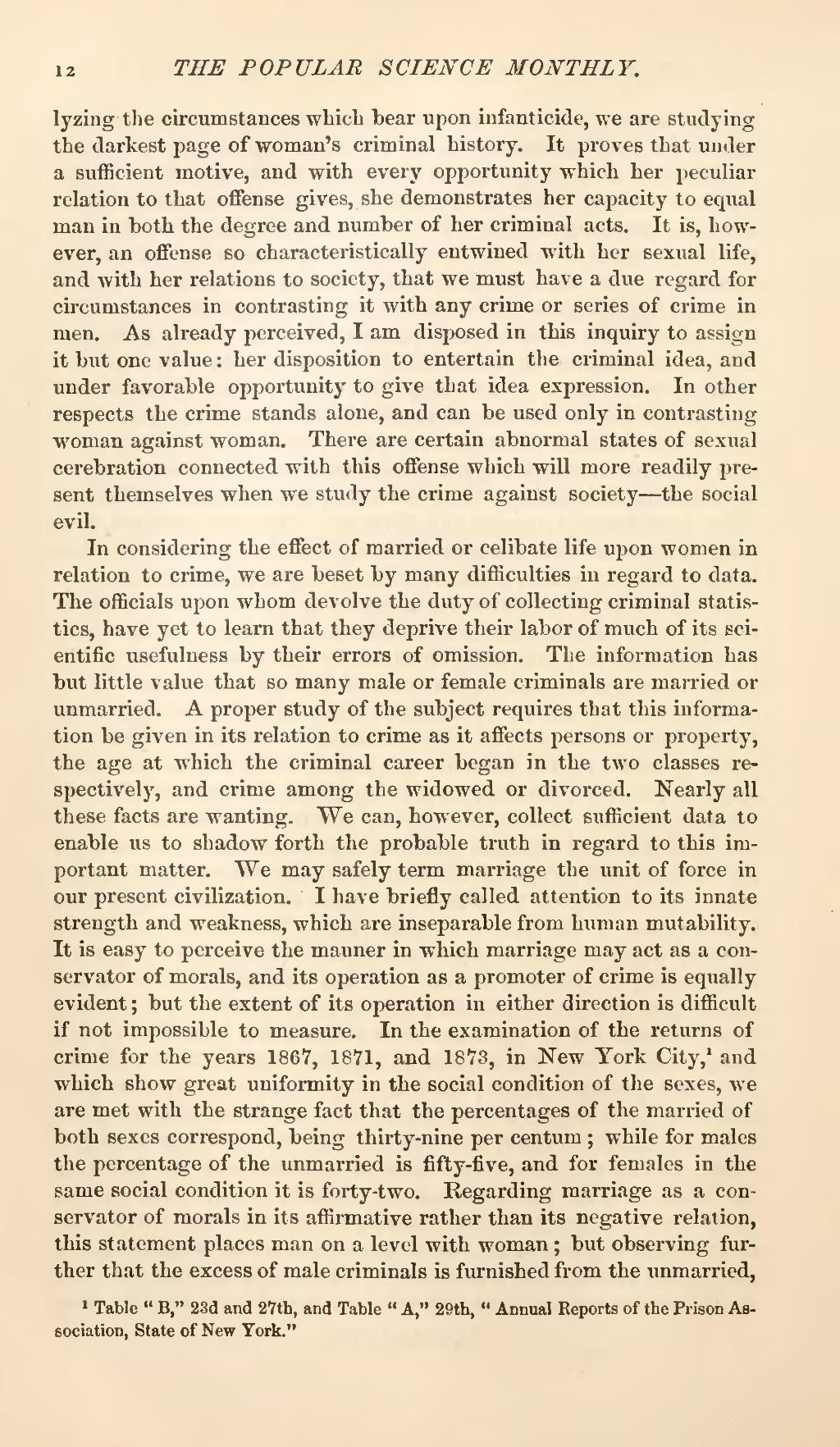lyzing the circumstances which bear upon infanticide, we are studying the darkest page of woman's criminal history. It proves that under a sufficient motive, and with every opportunity which her peculiar relation to that offense gives, she demonstrates her capacity to equal man in both the degree and number of her criminal acts. It is, however, an offense so characteristically entwined with her sexual life, and with her relations to society, that we must have a due regard for circumstances in contrasting it with any crime or series of crime in men. As already perceived, I am disposed in this inquiry to assign it but one value: her disposition to entertain the criminal idea, and under favorable opportunity to give that idea expression. In other respects the crime stands alone, and can be used only in contrasting woman against woman. There are certain abnormal states of sexual cerebration connected with this offense which will more readily present themselves when we study the crime against society—the social evil.
In considering the effect of married or celibate life upon women in relation to crime, we are beset by many difficulties in regard to data. The officials upon whom devolve the duty of collecting criminal statistics, have yet to learn that they deprive their labor of much of its scientific usefulness by their errors of omission. The information has but little value that so many male or female criminals are married or unmarried. A proper study of the subject requires that this information be given in its relation to crime as it affects persons or property, the age at which the criminal career began in the two classes respectively, and crime among the widowed or divorced. Nearly all these facts are wanting. We can, however, collect sufficient data to enable us to shadow forth the probable truth in regard to this important matter. We may safely term marriage the unit of force in our present civilization. I have briefly called attention to its innate strength and weakness, which are inseparable from human mutability. It is easy to perceive the manner in which marriage may act as a conservator of morals, and its operation as a promoter of crime is equally evident; but the extent of its operation in either direction is difficult if not impossible to measure. In the examination of the returns of crime for the years 1867, 1871, and 1873, in New York City,[1] and which show great uniformity in the social condition of the sexes, we are met with the strange fact that the percentages of the married of both sexes correspond, being thirty-nine per centum; while for males the percentage of the unmarried is fifty-five, and for females in the same social condition it is forty-two. Regarding marriage as a conservator of morals in its affirmative rather than its negative relation, this statement places man on a level with woman; but observing further that the excess of male criminals is furnished from the unmarried,
- ↑ Table "B" 23d and 27th, and Table "A," 29th, "Annual Reports of the Prison Association, State of New York."

